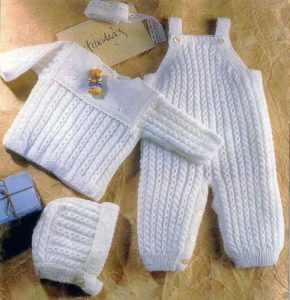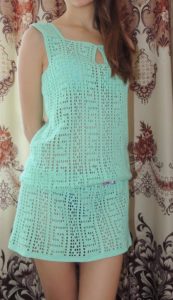Acrylic is a yarn that has become widespread. But not everyone knows about its basic properties, advantages and disadvantages, and the possibility of combination with other fibers. In order to better understand all the intricacies of acrylic threads, you should read this article.
When is the best time to use acrylic yarn?
Acrylic yarn is fibers woven into threads of different thicknesses and having different textures. They are obtained exclusively by chemical methods. This determines the main characteristics of this yarn:
 uniform in color and texture;
uniform in color and texture;- soft and pleasant to tactile contact;
- inextensible, subject to high-quality production and proper use;
- You can find on sale mixed fibers in a combination of acrylic and wool.
This results in the widest range of possible applications. But it’s worth mentioning that it’s still this thread is ideal for creating winter or demi-season items. “Pure” - 100% acrylic will form a product that is smooth in texture, soft and comfortable to wear. If the yarn contains mohair, the product will have a certain fluffiness. Mixed acrylic and wool threads are suitable for a warm winter item that will keep its owner from freezing. Alpaca and angora will have the same effect.
But adding natural bamboo threads to acrylic makes it possible to get a comfortable product for spring or autumn.
If you want to knit an elegant thing, then acrylic will find its application here too. Many manufacturers add sequins, superacrylic, nylon, metallic thread, and lycra to acrylic yarn. These woven threads can create a wide variety of yarn effects, and, accordingly, the finished product.
Blended yarn has absorbed the positive properties of both acrylic and the threads used as an additive.
Important! In order for the yarn to serve as long as possible, you should not wash it in water hotter than 500 C. Otherwise, this may lead to deformation of the product.
Pros of thread
Knitters often choose acrylic yarn. This is due to such positive characteristics as:
 ease of use because the loops lie flat and do not catch when knitting;
ease of use because the loops lie flat and do not catch when knitting;- has sufficiently high strength;
- With proper care and washing regimen, it keeps its shape well;
- causes pleasant tactile sensations, therefore it is often used for knitting children's clothing;
- is not susceptible, unlike wool and other natural fibers, to attacks by insects such as moths;
- yarn is in an affordable price category;
- has a wide color palette due to the specific twist of the thread and the ability of synthetic dyes to penetrate deep into the fiber;
- colors remain in their original form for a long time and are not subject to fading.
What weather can acrylic clothing be worn in?
It is most optimal to use acrylic in winter and spring-summer.
Pure acrylic may not create a sufficiently comfortable thermal balance at very low temperatures. In addition, it is not hygroscopic and does not allow air to pass through. And this contributes to the fact that acrylic sweats more often. Moreover, sweat is not absorbed by acrylic thread. In order to reduce this effect, you can purchase fibers to which natural thread has been added.
What things can be knitted from acrylic?
Acrylic can be used for knitting by adults, children and babies.
You can get a wide variety of products from it:
 sweaters;
sweaters;- sweatshirts;
- vests;
- cardigans;
- scarves;
- hats;
- children's pants;
- bolero;
- toys both for children and interior;
- interior decor elements - pillows, blankets.
Features of knitting yarn
 When knitting acrylic, you should use knitting needles or a crochet hook, which is recommended on the skein label.. But if you are knitting a pillow, blanket, or even more so a toy, then the knitting density in this case should be greater - it is recommended to take knitting needles or a hook approximately ½ size smaller.
When knitting acrylic, you should use knitting needles or a crochet hook, which is recommended on the skein label.. But if you are knitting a pillow, blanket, or even more so a toy, then the knitting density in this case should be greater - it is recommended to take knitting needles or a hook approximately ½ size smaller.
But for children's clothes, it is worth knitting with knitting needles, on the contrary, weaker, so that the item is softer and does not cause discomfort in children. Therefore, you can take a knitting tool, on the contrary, ½ size larger.
Important! If you plan to combine two threads, you should make sure that they do not stain.To do this, soak pieces of these threads in hot water and place them on a white cloth to make sure that the finished product does not subsequently fade or color itself.
In all other respects, standard techniques should be followed.


 uniform in color and texture;
uniform in color and texture; ease of use because the loops lie flat and do not catch when knitting;
ease of use because the loops lie flat and do not catch when knitting; sweaters;
sweaters; 0
0





